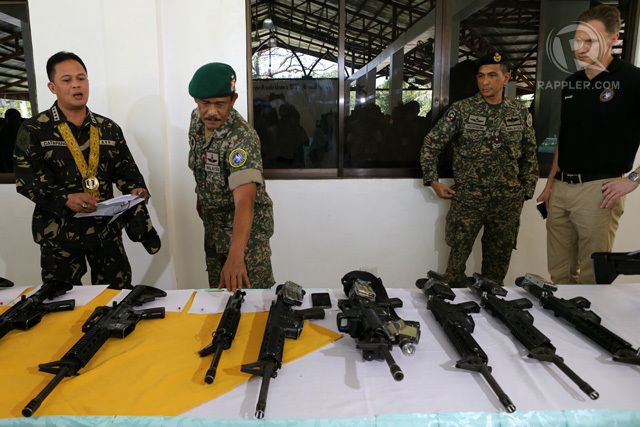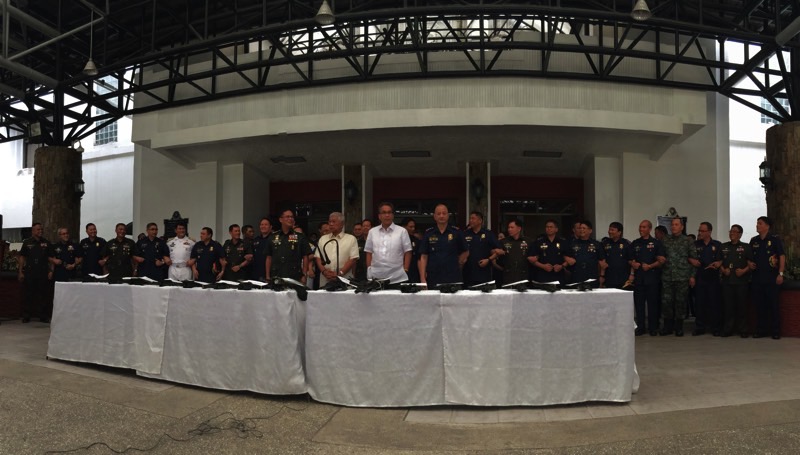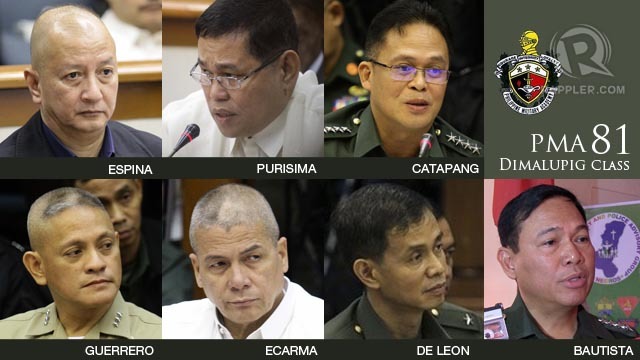From InterAksyon (Feb 19):
War in Mindanao: What are the internal and external repercussions? Last of 3 parts (by Jose Antonio A. Custodio)
[Editor's note: Jose Antonio A. Custodio is a security and defense consultant and was a technical adviser for a US defense company working for the US Pacific Command. He also specializes in military history and has post-graduate studies in history from the University of the Philippines. He also teaches history and political science at several universities in Metro Manila.
In the first two installments of his piece, Custodio reviewed Estrada’s all-out war campaign and the military preparedness should it go on an all-out war. In this last part, he will answer: What are the internal and external repercussions of returning to a war footing with the Moros?]
A key consideration here is to determine what is the objective of an all-out war? Is the objective to eliminate the Bangsamoro Islamic Freedom Fighters (BIFF)? Or is it to punish the MILF? Can such objectives be met without the risk of degenerating into full-scale conflict given the fact that it is difficult to distinguish the two secessionist groups from each other?
During the 2000 Abubakar Campaign, the objective of the AFP was simply to eject the MILF from the camps that they occupied and this was done during a period stretching from March to July 2000. However as the secessionist army managed to survive the assault, it made the government victory a hollow one as the MILF lived to fight another day.
Thus if the decision to utilize military force is used, the objective has to be determined. Launching retaliatory strikes or occupying camps will not destroy the secessionist’s capacity to resist. Launching an offensive to destroy the secessionist army will not be a quick affair, will drag on for a very extended period of time, will open up new fronts, exhaust ammunition stocks, create wear and tear on military equipment, will require the mobilization of the nation and the requisite political will to sustain it and ironically there is no guarantee of success, but the economic and human costs have already been estimated in studies of such a conflict occurring.
What would be the MILF strategy?
The secessionist strategy against a military offensive is simply to outlast the capacity of the government to conduct the operations.
Although in some areas MILF forces will try to engage the government forces, it is expected that they will eventually resort to guerrilla warfare to evade and tie down the military and launch terrorist operations against soft targets throughout the Philippines, possibly in Metro Manila.
Those terror operations will distract and divert the attention of the government as there will be a public clamor for protection.
Weathering, withstanding, and surviving the assaults of the government will be a victory for the secessionists even if they constantly lose in battles.
A bonus for the secessionists is if they can replicate their battlefield victory at Mamasapano against regular military formations. The longer the campaign drags on, the better the chances that a ceasefire will occur and negotiations will resume.
That is the reality today.
The secessionists realize that the world is different now and is more sympathetic to ethnic self-determination than before and they are taking advantage of it. They also know that the Philippine government will have great difficulty in sustaining operations as it will definitely affect the state of the economy and the stability of the nation, diminish the combat effectiveness of the military, and eventually there will be strong pressure to negotiate again.
All that they need to do is to survive the offensives and appear to be receptive to peace and that together with all the other previously mentioned factors will generate the local and international pressure to declare a ceasefire and to return to the negotiating table.
Internal repercussions
It needs to be emphasized that the internal security situation in the Philippines is composed of two elements: the threat of secession and the lingering communist insurgency.
Paradoxically, although the secessionist threat has the infinitely greater potential of tearing the country apart, there are some who still cling to the notion that the communist threat is the more serious one no matter how moribund and ineffective are their front organizations and how weak the NPA is.
Apparently, old Cold War habits die hard. There are times that these two threats do complement each other as both tie down military and police assets and the NPA takes advantage of government concentration on the secessionists especially when military units deployed against the communist rebels are stripped of personnel to reinforce operations in Mindanao.
Hence the government has to expect increased NPA activity once fighting breaks out against the secessionists.
Communal strife can rear its ugly head and have disastrous repercussions on the human rights situation in Mindanao as armed groups based on ethnic grounds on both sides may undertake indiscriminate reprisals against the innocent.
There is much chatter by some people in social media about the need to revitalize the Ilagas without really carefully thinking what the impact of such an armed group will have on the conflict.
Degeneration into ethnic communal conflict will surely bring in international attention and it will be immaterial if the Bangsamoro Basic Law is constitutional or not as the international community out of humanitarian concerns will impose a political solution that will see a division along ethnic lines to prevent the killings from continuing.
External effects
A general war in Mindanao given today’s situation in the Middle East carries with it the possibility of attracting all sorts of nut heads, lone wolves, and extremists into our shores with the declared intention of waging war against the infidels.
The government has to take into consideration an increased influx of such types into the Philippines and this will severely task the intelligence and security apparatus of the state.
Some will get through and if they manage to carry out their attacks against soft targets in Metro Manila and elsewhere it will add further damage to the social, political, and economic fiber of the country which would already be reeling from the conflict down south.
Lastly, it is to be expected that China will take advantage of our renewed internal focus on protracted operations against the secessionists and other rebels. They will correctly deduce that the internal focus of the Philippine government will derail the efforts to modernize the military and other security and maritime agencies as funds that had been earmarked for modernization will be diverted to the operations in Mindanao.
They will also deduce that the Philippines will not try to do anything more in the West Philippine Sea so as not to open up another front that will require it to take some form of action when it is already heavily involved in Mindanao.
In short, whatever window of opportunity that there is now to stave off China’s territorial ambitions will be lost, as by the time the government returns to paying attention to the WPS following a termination of hostilities with the secessionists, the situation will have changed as new Chinese bases constructed on reclaimed reefs will throttle Filipino installations in the Kalayaan Island Group and deny the Philippines of its own Exclusive Economic Zone (EEZ).
READ PART 1 HERE.
READ PART 2 HERE.
http://www.interaksyon.com/article/105381/war-in-mindanao-what-are-the-internal-and-external-repercussions-last-of-3-parts












